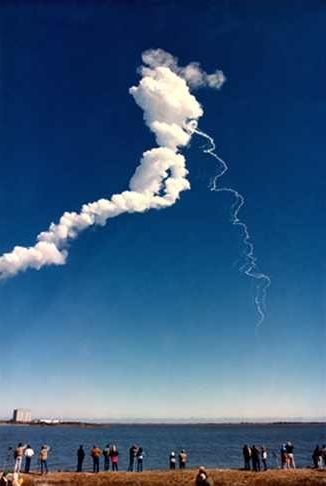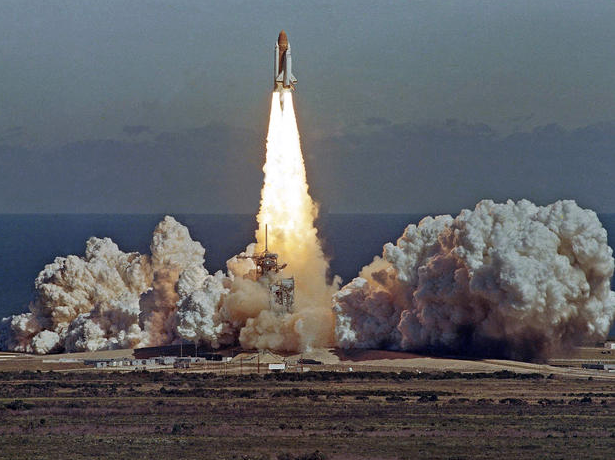
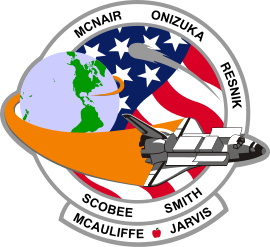
At liftoff, an O-ring seal between segments of the right Solid Rocket Booster (SRB) began leaking. Superheated gases breached the seal and began to burn laterally.
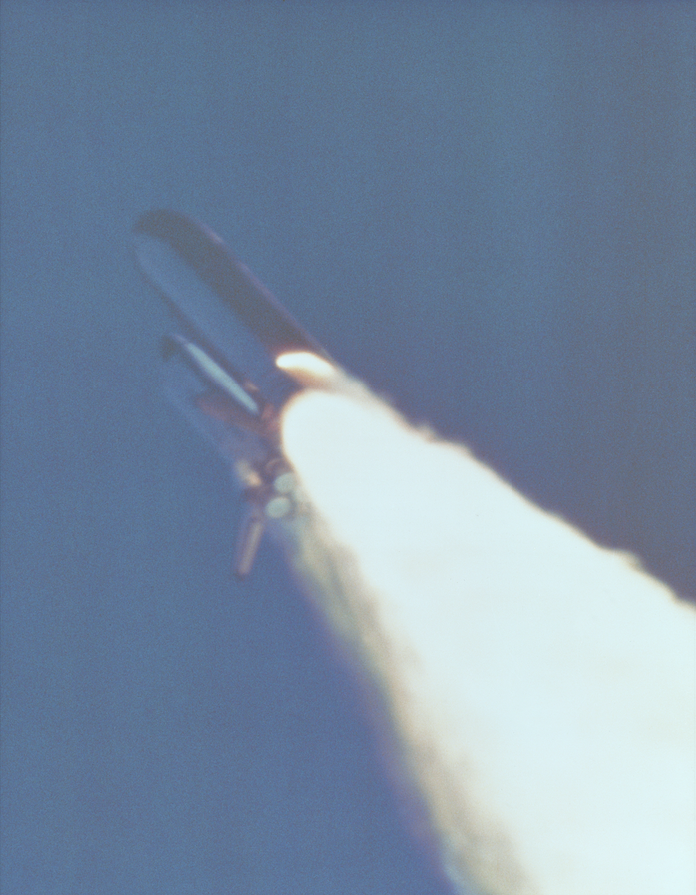
The venting rocket exhaust burned through the SRB attachment strut and into the liquid hydrogen tank in the lower section of the External Tank. The aft portion of the liquid hydrogen tank failed and drove the tank vertically upward into the liquid oxygen tank. Both tanks ruptured and the propellants detonated.
1 minute, 13 seconds after liftoff, Challenger was accelerating through Mach 1.62 (1,069 miles per hour, 1,720 kilometers per hour) at approximately 46,000 feet (14,020 meters) when the explosion of the external tank caused the space shuttle to suddenly veer away from its flight path. The shuttle was subjected to aerodynamic forces far beyond its design limits and it was torn apart.
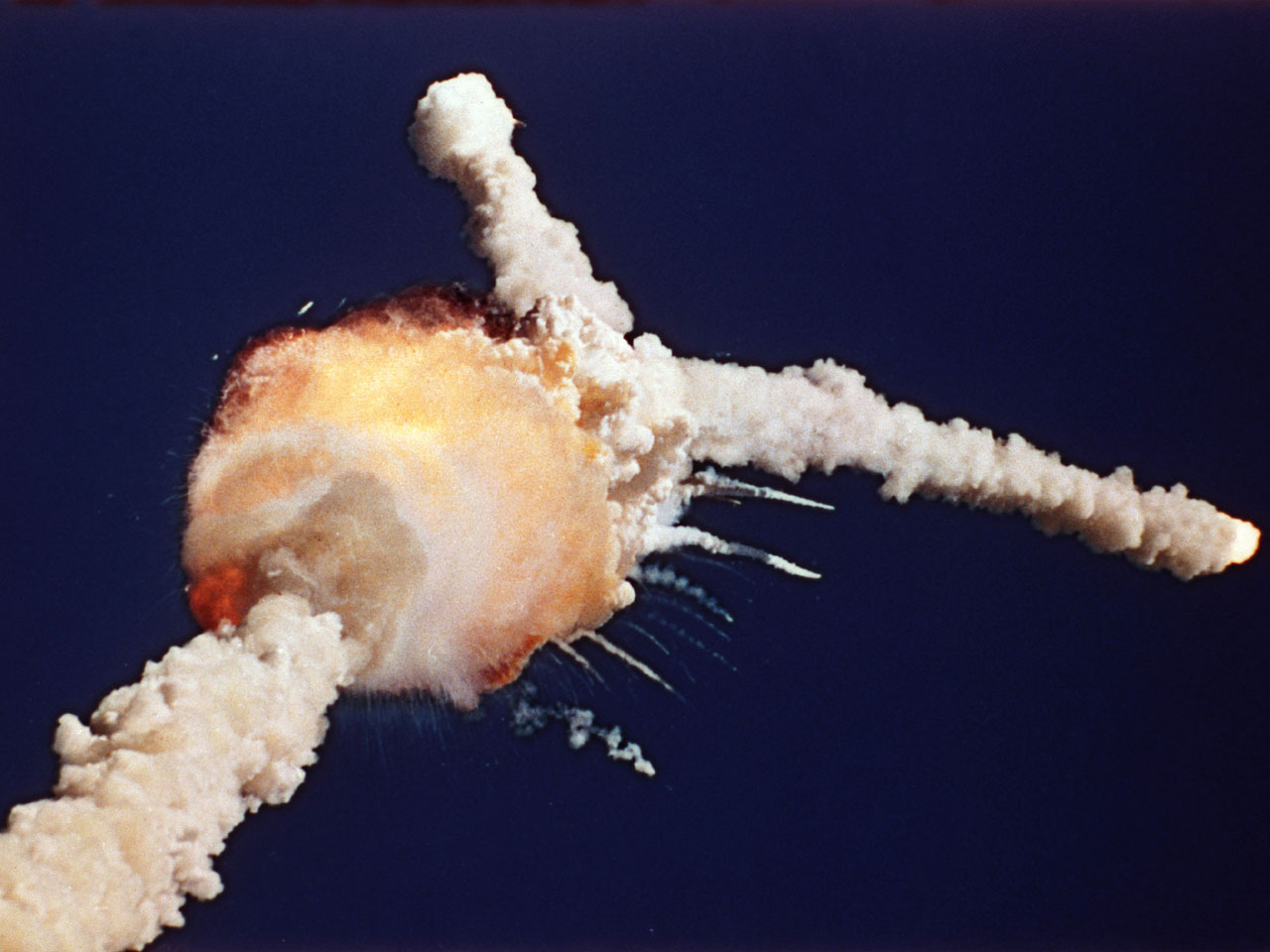
The crew cabin, with its seven astronauts aboard, broke away from the disintegrating shuttle assembly and continued upward for another 25 seconds to approximately 65,000 feet (19,080 meters), then began a long fall to the ocean below.
2 minutes 45 seconds after the explosion, the cabin impacted the surface of the Atlantic Ocean at 207 miles per hour (333 kilometers per hour). The entire crew was killed.
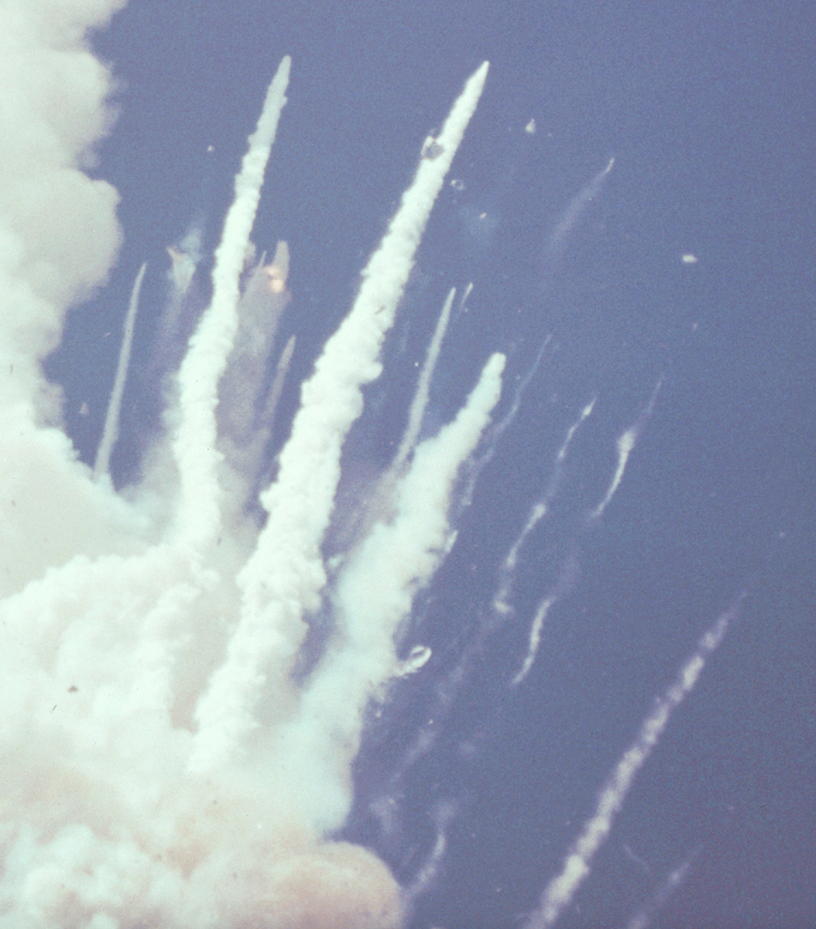
I watched this terrible tragedy as it happened, live on television. I will never forget.
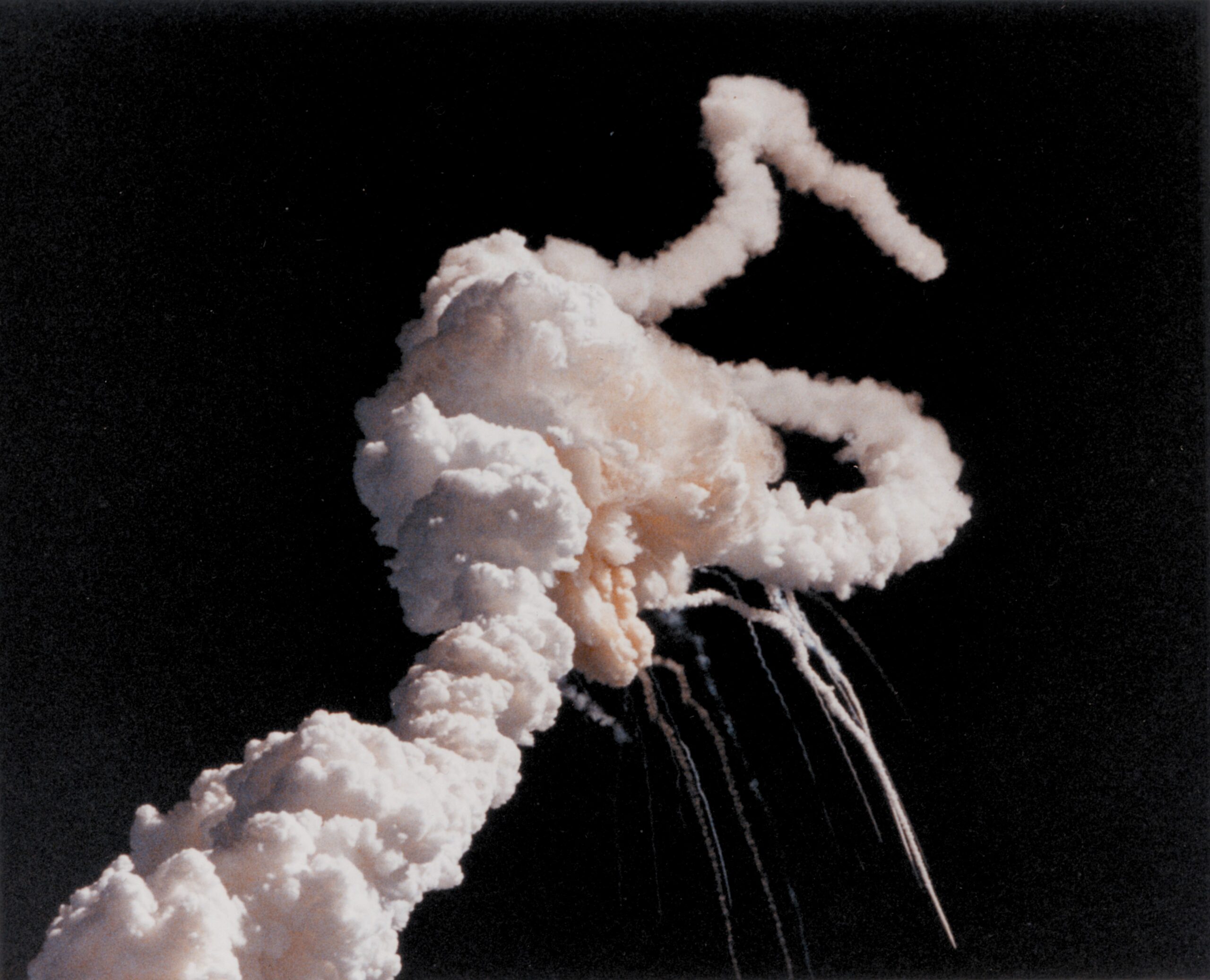
AD ASTRA PER ASPERA
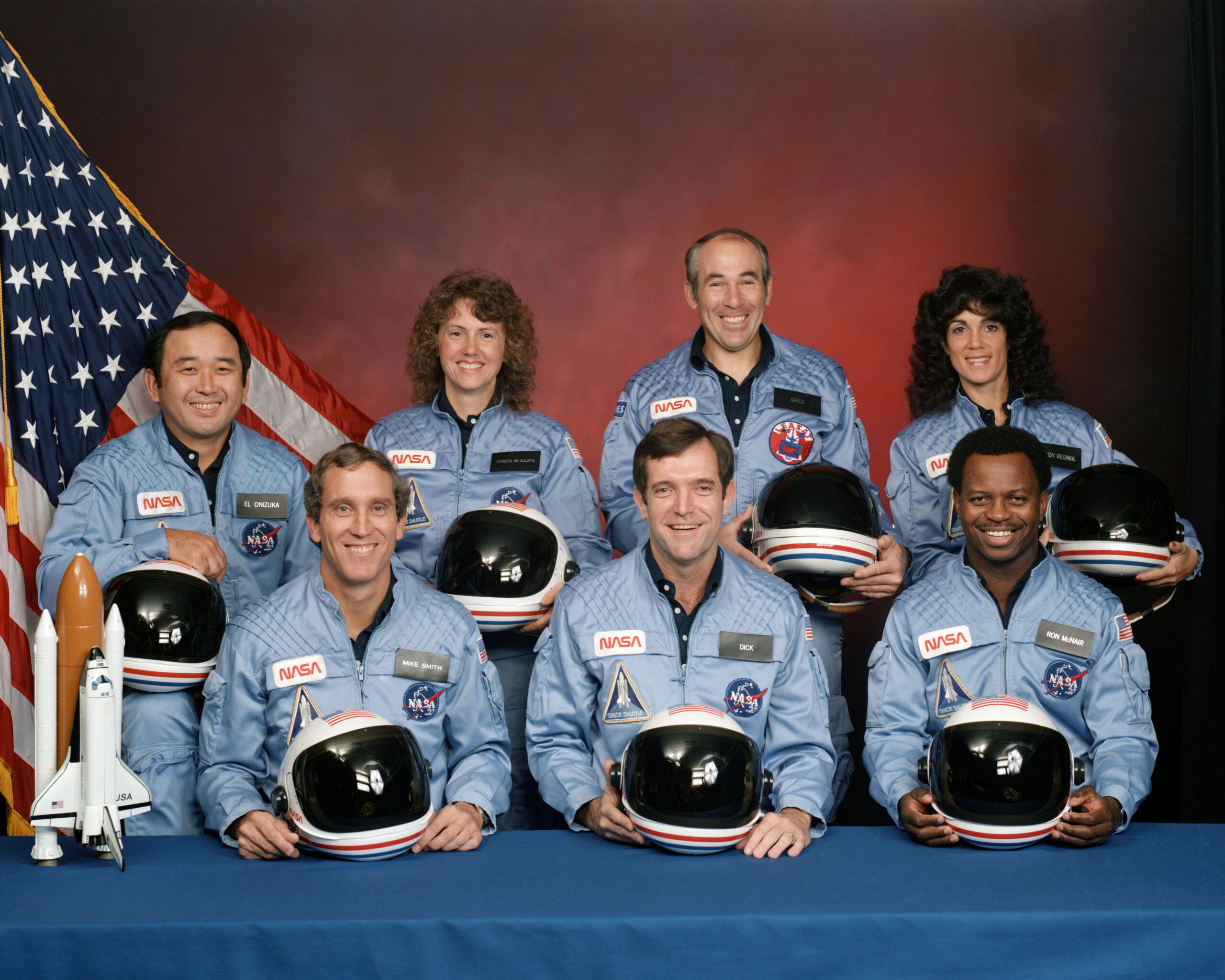
© 2019, Bryan R. Swopes
